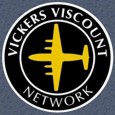
June 1955 to August 1962
British European Airways Corporation (BEA)
G-ANHF - c/n 66 - a V.701C series Viscount
United Kingdom registered
28 June 1955
Registered to British European Airways Corporation (BEA), Bealine House, Ruislip, Middlesex.
4 July 1955
First flight from Hurn Airport, Bournemouth, Hampshire, England.
11 July 1955
Certificate of Airworthiness issued.
11 July 1955
Delivered to British European Airways (BEA) named as 'R M A Matthew Flinders'.
Englishman Matthew Flinders was a Royal Navy Captain who was a navigator and cartographer and was the leader of the first circumnavigation of Australia on board H.M.S. Investigator, which was completed in 1803. This voyage, which took nearly two years identified Australia as a continent. He made three voyages to the southern ocean between 1791 and 1810. He was born in Lincolnshire 16 March 1774 and died in London 19 July 1814.
Trans-Australia Airlines (TAA) also named Viscount VH-TVI (C/N 147) after him.
It was fitted with Rolls-Royce Dart RDa3 Mark 506 engines and designated as a Type 701C.
This was the first Viscount delivered to BEA with a new standard of flush ventral cabin air intake fitted on the rear fuselage underside. This modification was fitted to model V.720, V.724 and all subsequent Viscounts, and saw the removal of the prominent ventral cabin air intake on the fuselage underside. This also applied to G-AOFX (C/N 182).
1954 to 1962
The original ‘cutlass’ design propeller blades were gradually replaced by new symmetrical ‘needle’ blade propeller sets.
From photographic evidence, both propeller types were fitted to Rolls-Royce Dart RDa3, Mark 505 and Mark 506 engines and many aircraft flew with an ‘intermix’ of both types of propeller blades.
2 January 1956
Three engines failed due to fuel contamination with water while en-route from Barajas Airport, Madrid, Spain to London Airport (Heathrow), Middlesex, England.
The flight had originated in Gibraltar. The aircraft was 70 nautical miles from Bordeaux, France at the time over the Bay of Biscay.
The crew managed to land at the military airfield of Cazaux on the west coast of France.
The flight crew, Captain E R Watts and First Officer D Haigh were both awarded the Queen’s Commendation for valuable services in the air.
7 January 1956
Noted at Blackbushe Airport, Hampshire, England due to a London Airport (Heathrow) weather diversion.
From May 1958
Converted from 40/47 seats to 60/63 seats in a new high density configuration. This modification included the installation of an 11th standard size window on the rear starboard side and a small window behind the rear entrance door on the port side of the aircraft.
23 December 1958
Noted at Gatwick Airport, Surrey, England due to a London Airport (Heathrow) weather diversion.
10 January 1959
Noted at Blackbushe Airport, Hampshire, England due to a London Airport (Heathrow) weather diversion.
26 January 1959
Noted at Gatwick Airport, Surrey, England due to a London Airport (Heathrow) weather diversion.
28 January 1959
Noted at Gatwick Airport, Surrey, England due to a London Airport (Heathrow) weather diversion.
29 January 1959
Noted at Gatwick Airport, Surrey, England due to a London Airport (Heathrow) weather diversion.
March 1959
A new BEA 'Red Square' livery was adopted and aircraft were repainted during the early 1960s when they next went in for overhaul.
Sadly, after repainting, the aircraft no longer carried a name including the nameplate on the forward cabin bulkhead.
31 March 1959
BEA annual report quotes a total flying time of 9,138 hours.
8 October 1959
Noted at Gatwick Airport, Surrey, England carrying out multiple ILS approaches and overshoots.
1 April 1961
Operated the first BEA Viscount service from Jersey Airport, Channel Islands to Hurn Airport, Bournemouth, Hampshire, England.
July 1961
Noted at Renfrew Airport, Glasgow, Scotland now repainted in the new 'Red Square' livery.
30 August 1962
Sold to Viação Aérea São Paulo SA (VASP).
Total time 15,682 hours.
 FURTHER READING: Books about BEA - British European Airways FURTHER READING: Books about BEA - British European Airways
|



